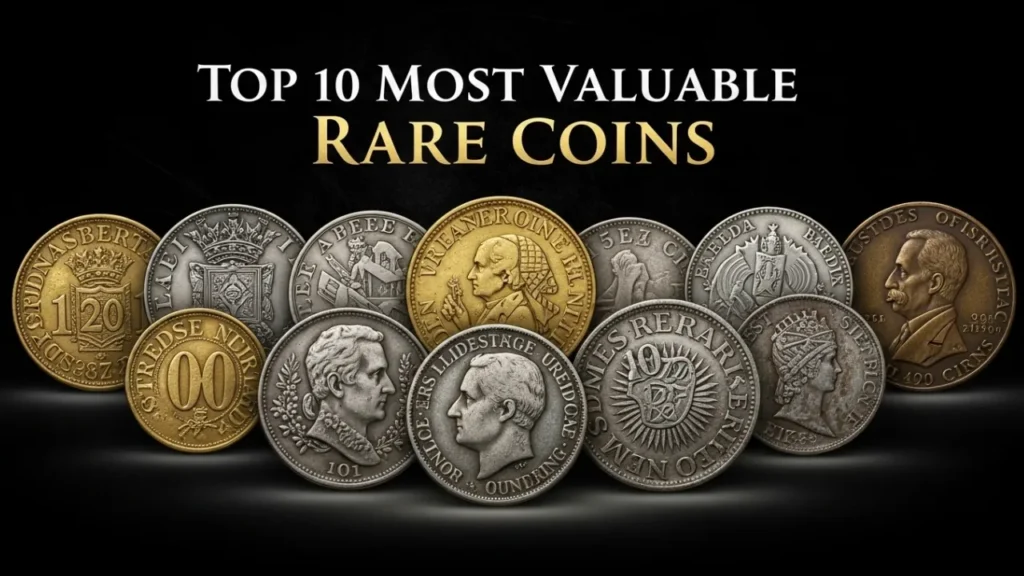What Truly Determines a Coin’s Value?
A coin’s worth isn’t just about age—it’s a perfect blend of rarity, demand, design, and condition. Some were minted in tiny numbers, while others gained fame due to unique minting errors or remarkable backstories. When only a handful exist, collectors are willing to pay millions. Every small detail—from a letter misprint to an off-center strike—can turn an ordinary coin into a priceless masterpiece.
A Journey Through the History of Coin Collecting
Coin collecting, or numismatics, traces its roots back thousands of years. Ancient rulers and scholars often gathered coins as symbols of power and prestige. As civilizations evolved, coins became not only currency but miniature works of art reflecting national identity and culture. Today, coin collectors pursue them for history, nostalgia, and value. Each coin holds a tale—from early American minting to modern commemorative launches that capture pivotal moments in history.
The 10 Most Valuable Rare Coins Ever Launched
Below are ten extraordinary coins that continue to fascinate historians and investors alike. Each one tells a powerful story and commands staggering prices at global auctions.
| Coin Name | Year | Unique Feature | Estimated Value |
|---|---|---|---|
| 1933 Saint-Gaudens Double Eagle | 1933 | Never officially released after Gold Recall Act | $7,000,000+ |
| 1913 Liberty Head Nickel | 1913 | Only five known examples exist | $3–5 million |
| 1794 Flowing Hair Silver Dollar | 1794 | First official U.S. silver dollar ever minted | $10 million+ |
| 1804 Silver Dollar | 1804 | Made for diplomatic presentation, not circulation | $4–10 million |
| 1955 Doubled Die Lincoln Cent | 1955 | Double impression of lettering and motto | $10,000–$20,000 |
| 1870-S Seated Liberty Dollar | 1870 | Extremely rare San Francisco minting | $100,000+ |
| 1916-D Mercury Dime | 1916 | Low Denver Mint production | $10,000–$25,000 |
| 1894-S Barber Dime | 1894 | Only 24 struck, fewer than 10 survive today | $1–2 million |
| 1937-D Three-Legged Buffalo Nickel | 1937 | Minting error missing one buffalo leg | $15,000–$100,000 |
| 2000-P Sacagawea “Cheerios” Dollar | 2000 | Distinct feather design, distributed in cereal boxes | $5,000–$25,000 |
How to Know If Your Coin Is Rare
Wondering if your coin could be a hidden gem? Start by checking its mintmark—symbols like “D,” “S,” or “P” reveal where it was made. Next, look closely for doubling, off-centering, or unusual engravings. These tiny minting flaws often skyrocket a coin’s value. The condition also matters—graded terms like “Fine,” “Very Fine,” or “Mint State” indicate its preservation quality. For ultimate assurance, submit your coin for professional grading through PCGS or NGC certification. Comparing recent auction results can give you an idea of real market value.
Why Rare Coins Still Hold Timeless Value
Rare coins are more than collectibles—they are living artifacts of history. From early American struggles to global trade revolutions, each coin represents a milestone in civilization. For collectors, owning one isn’t just an investment—it’s like holding a piece of the past in your hand. With growing demand for authentic assets, these coins continue to rise in value, proving that history truly does pay.
Expert Tips for Coin Collectors
Buy only from trusted, certified dealers or well-known auctions. Keep coins in temperature-controlled containers and never polish them, as cleaning can reduce their grade. Maintain detailed purchase records, certificates, and images for insurance and resale purposes. Lastly, follow updates from organizations like the American Numismatic Association to stay ahead in the market.
FAQs
Q1: How can I check my coin’s value?
A: Use trusted sources like PCGS or NGC, or visit certified dealers for professional evaluation.
Q2: Do all old coins become valuable?
A: Not necessarily. Only coins with limited mintages, unique features, or historical significance achieve high collector value.
Q3: Can modern coins still become rare?
A: Yes! Modern coins with minting errors or limited editions can gain value over time.
Q4: What’s the safest way to store valuable coins?
A: Store them in air-tight holders away from moisture and extreme temperature changes.
Q5: Where can I sell rare coins for the best price?
A: Reputable auction houses and certified online platforms are the best places to get competitive offers for rare coins.

Hi, I’m Anas, the person behind StartMotor. Cars have always been my passion, and through this platform, I share the latest news, reviews, and updates from the automobile world. My aim is to make auto information simple, useful, and enjoyable for readers worldwide.

